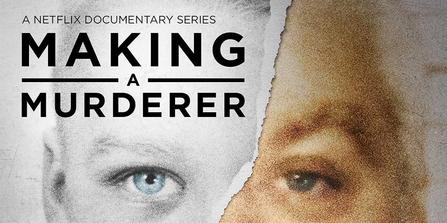Netflix original “Making a Murderer” strikes a nerve
4 min read
Making A Murderer | Netflix
By ELIZA MAY
Last week, Netflix’s chief content officer, Ted Sarandos, announced that the streaming company will be adding 600 hours of original content in 2016. The announcement comes less than a month after the release of “Making A Murderer,” Netflix’s highly discussed documentary series, chronicling the 2007 convictions of Steven Avery and his nephew Brendan Dassey, for the murder of Teresa Halbach.
Following the announcement of original content to come, Sarandos stuck around to discuss the documentary with the few remaining reporters. “People are obsessed [with the story],” he said, continuing, “we’re natural born detectives and love to watch these shows.”
Sarandos went on to add that the story is still unfolding. “It was a remarkable turn of events in the last couple of weeks of the year where it was that crazy combination of super addictive television and time to watch it. People were watching it and telling their friends who also had time to watch it during the holiday break.” But why was “Making A Murderer” so addicting?
Laura Ricciardi and Moira Demos, the filmmakers behind the controversial docuseries, took great care to insure that the viewers have an emotional connection to the story even before they press ‘play.’
Starting with the film’s description, and continuing to the title of the first episode, “Eighteen Years Lost.” Ricciardi and Demos are painting a picture of a life that has wrongfully been brought to a halt at the hands of the very men and women whose job it is to protect and serve.
The series opens to a camcorder recording of a car coming up a dirt road surrounded by farmland with chatter in the background, when you hear a man declare, “Here they come, up the road, after 18 years.”
The screen pans out to a crowd of reporters surrounding an old blue-gray Chevrolet sedan. Steven Avery soon emerges out of the car in a blue t-shirt and jeans, sporting a long gray beard, appearing seemingly unfazed and says, “Oh, hello.” to the group of reporters.
After the reporters disperse, a woman puts her arms around Avery’s neck and exclaims, “Oh God, Stevie you’re home.”
The screen is then saturated with newspaper articles from the day of his release, one headline reading, “DNA Frees Man After 18 Years,” and a voiceover of a man stating, “law enforcement despise Steven Avery.”
As the screen fades away a woman says, “I did tell him, be careful, there was just something I felt. I said Manitowoc Counties not done with you, they are not even close to being finished with you.”
The opening credits for the series begin to roll, with the somber sound of violins and drums playing while dark shots of farmland, a salvage yard, empty downtown streets, old family pictures and knives flicker across the screen. It is difficult to not feel as if you are watching the opening for a fictional series Walking Dead rather than the real-life story of a woman’s murder and the men convicted of taking her life.
Over the next 10 hours, viewers are taken on a journey through Steven Avery’s life, from his childhood to the original false conviction in 1985, his exoneration and the subsequent lawsuit against the county.
This background information helps situate the viewer before focusing on the arrest, trial and conviction of Avery and his nephew, Brendan Dassey, for the murder of Teresa Halbach. Commentary is provided by their family, friends, lawyers and local law enforcement, as it paints a picture of two innocent men wrongfully convicted, yet again, at the hands of Manitowoc County Police.
As the series gained in popularity and public outrage at the treatment of Avery, Sarandos was questioned about comments made by former prosecutor Ken Kratz, who claimed that some evidence was left out of the docuseries.
In response, Sarandos said “This film is 10 years in the making. There was over 700 hours of footage. To split hairs about what was left in or left out, it’s a great film and we want people to watch it and decide for themselves.”
Yet some people found his “splitting hairs” remark troublesome. Most would think that evidence like Avery’s sweat being under the hood and trunk of Halbach’s SUV, Halbach’s belongings being found on Avery’s property, his request for her to be the one to come out to photograph his car or that he called her phone three times prior to her arrival would be key information filmmakers would want to include in order to tell the full story, not just the story they want viewers to believe as the truth, which is what viewers were given in this documentary.
Thanks to the widespread conversation “Making A Murderer” has caused and the 300,000 individuals calling for Avery’s release, Investigation Discovery is currently developing a news special to air later this month. In response, Sarandos said, “[Investigation Discovery] is smart and get the sense that the entire world is talking about this story. That’s what they’re following. It’s a news story.”


